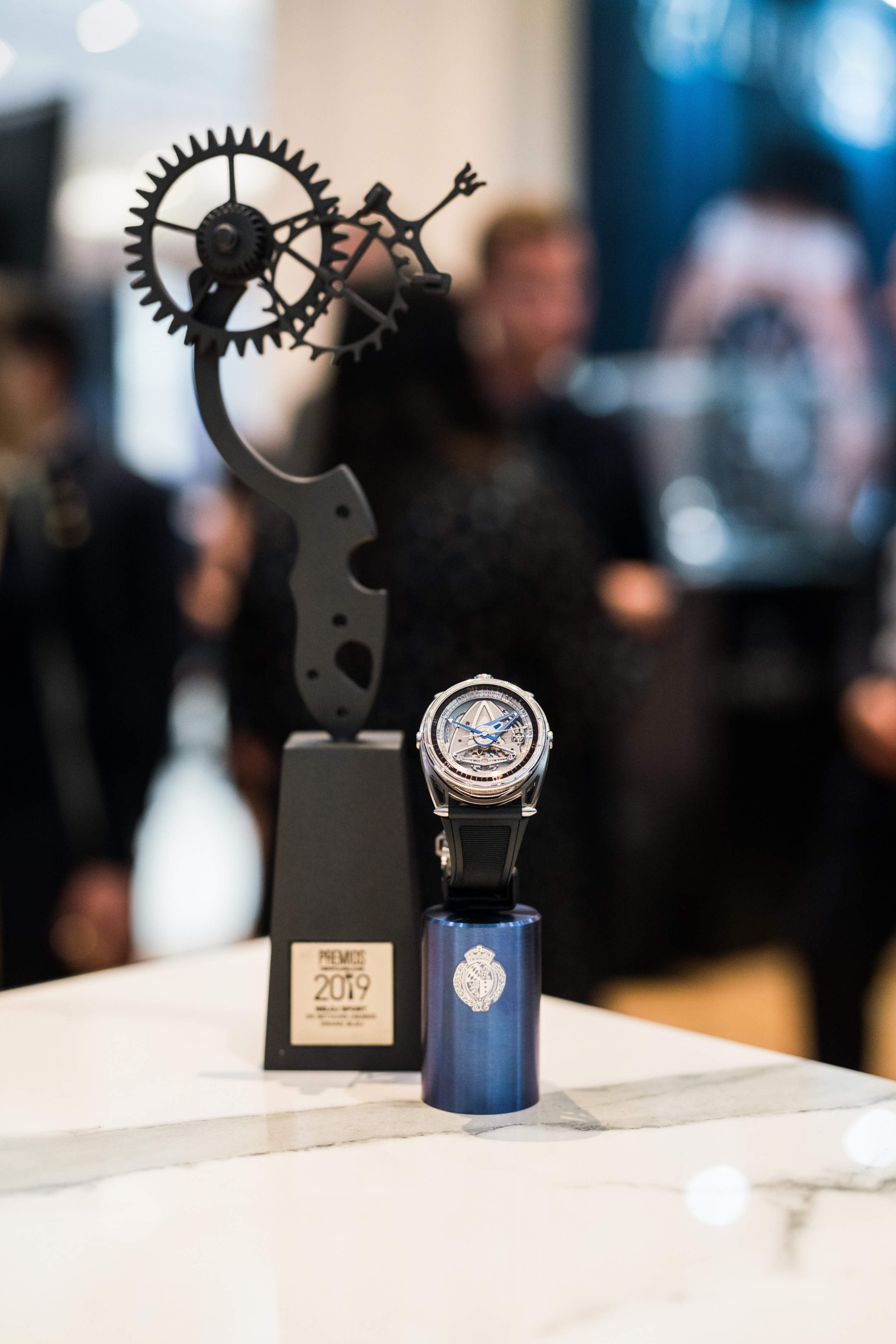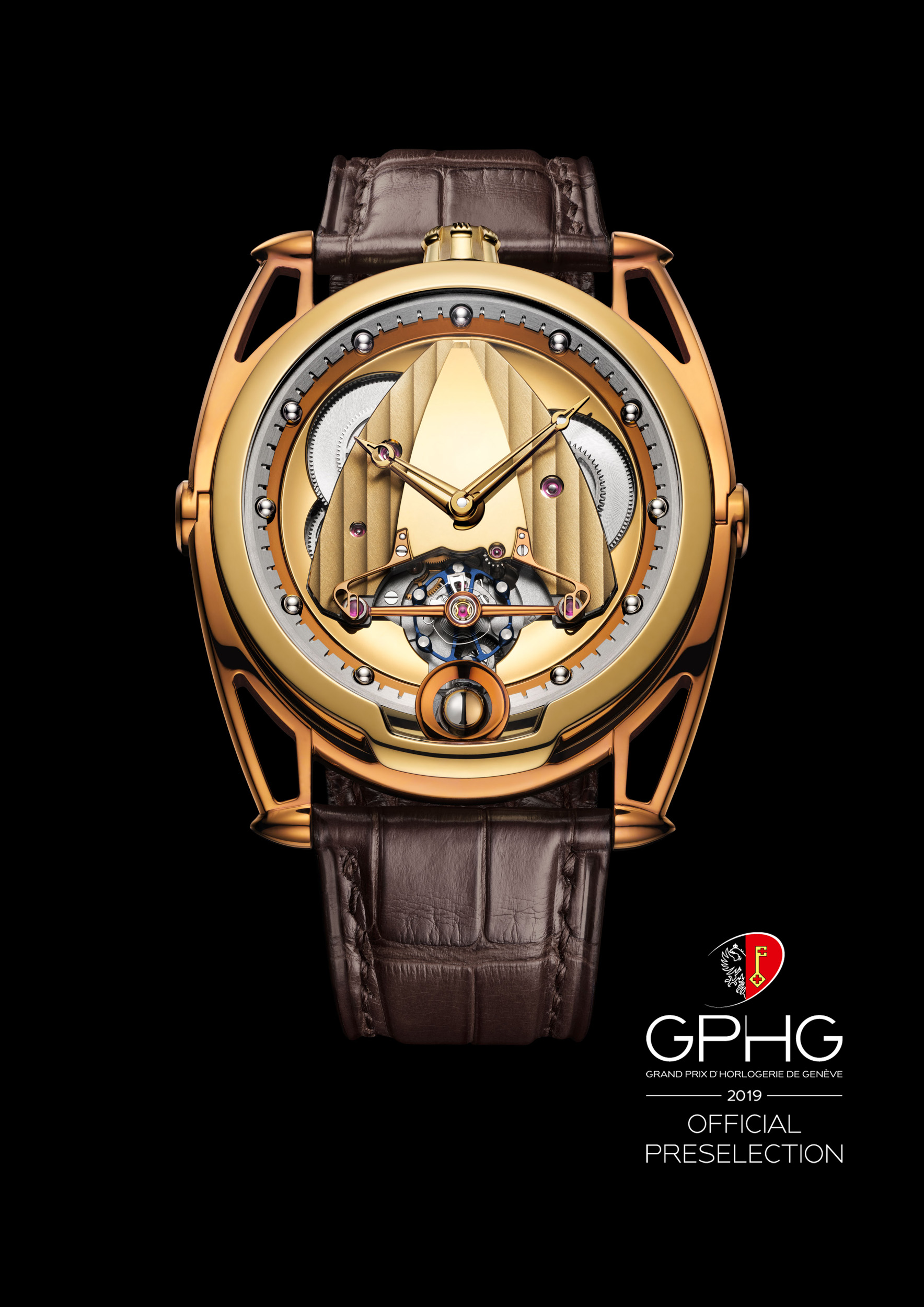Interviews • 17 Oct 2019
Pierre Jacques on Leading De Bethune
De Bethune is everywhere at this time of the year. The DB28GS Grand Bleu and DB28 Yellow Tones are in the running for the Diver’s and Men’s Watch Prize at the 2019 GPHG, their Only Watch (made in collaboration with Urwerk) is coming up for auction and just this morning news came in that the DB28GS Grand Bleu won the Best Sport Watch at the 2019 Salón Alta Relojería in México. Despite a hectic schedule, Pierre Jacques was kind enough to put aside some time to have a chat with us about his career at De Bethune and how he sees the brand in 2019.

Pierre was always interested in watches (he got his first watch at 5); he just never thought to make a career out of it, deciding early on to become a carpenter. While his parents persuaded him to attend University instead (Pierre majored in International Relations), he never let go of his ‘maker’ mindset. Managing to simultaneously pull off a Master degree, work to help support his large family and dabble in entrepreneurial pursuits on the side.
His natural inclination for entrepreneurship and his love of watches came together when he founded GMT Magazine in the year 2000 – becoming one of the earliest serious players in the watch editorial space. Since first joining De Bethune, Pierre took a short hiatus before returning as CEO with the backing of a Luxembourg-based investment fund. With the support and the financial stability that comes with that, De Bethune has been free to pursue its ambition of making highly innovative and beautifully finished watches.

How did you transition from the publishing industry to the watch industry?
After I left my alma mater, I was in love with the printing and publishing business. So, this is what I went into, but, as I always had a passion for watches, I thought about how I could combine those two things. And so, I founded GMT with Brice Lechevalier around March [2000]. After I sold GMT in 2007 to a group, I had to decide what to do next. So, I took on the role of managing the GPHG for two years while also being the branch manager of Les Ambassadeurs in Geneva. A lot was happening there, but I have always preferred to be in front-facing roles – I love contact, I love to sell. As a manager of a big multi-brand store I was more behind the scenes – looking at my excel sheet and the performance of sales, instead of being on the floor. During this time, I met David Zanetta and Denis Flageollet
So, you joined De Bethune straight away?
We’d been friends and had a business relationship since my time at the GPHG. They came a couple of times when I used to be in charge at Les Ambassadeurs saying that I should join them as they needed someone like me. It was my secret dream, but I didn’t know anything about running a manufacture. They must have been crazy to believe in me, but after the fifth or so time they mentioned it, I said “why not!” It was a jump, a really big jump for me. I arrived on the first day and said “where do I start? What can I do?”

You obviously hit the ground running?
You know it’s very special. De Bethune isn’t a normal brand; it’s a brand for collectors and connoisseurs. I had to build credibility because you know, the customers were a bit hesitant. It was really challenging and I was quite nervous for the first 3 to 6 months. Anyway, the company was facing some difficulty – the life of a company you know, there’s up and downs. And at the time of my arrival it was in a ‘down’, so we had to find a solution to survive. And because of my connections I helped find the solution at the time. It’s scary because you think “what can I bring?”
Because of my background, I had a different view of the industry. As I was in the publishing business, I was visiting factories and speaking to many people from the industry. And as I was also working for a multi-band retailer, I had a view of what the customer was looking for. For example: what’s sellable and what’s not. What’s the reality of the market. And then during my time at the GPHG, I was more involved on the industry side, speaking to critics and collectors.

This multi-faceted perspective must have helped you chart the course for De Bethune
I had a balanced perspective. It’s not to say that a watchmaker doesn’t have perspective, but it’s really a combination of many things. Without the talent of Denis Flageollet, there would be nothing to promote anyway! So, it’s really about the product at the end of the day. Because at De Bethune we are not looking to grow, we are looking to make exceptional watches. To keep a humble mindset and do the best we can.
About the investment consortium backing De Bethune. Has it helped you double-down on making exceptional watches? Now that you’ve got a stable financial foundation
We have a niche market. We cannot expect to maintain that level of quality and finishing at 1000 pieces. We know that we are in a niche and that we can make 250, maximum 300 watches at that level. So, for an investor we didn’t sell a dream, it’s really like a collection of friends and family. We didn’t promise anything spectacular aside from the quality of the watches. So, there was zero financial pressure on our shoulders to grown production. The main intention was for the financial situation to stay profitable and for us to stay humble. Denis Flageollet and I are not dreaming about mega yachts or luxury castles. We live a simple life and still have two feet on the ground.
Because if you have two feet on the ground – well with Denis and me we have 4 in total [laughs], but, if you stay like this and have a team that’s highly trained…well then you really get to turn your job into a passion! If you visit our manufacture, you see every watchmaker is 100% behind their job. And that’s it! Let’s call it De Bethune 2.0 since when I came back. There was an expectation to make a big change…and production went up to 400 pieces. And then one day you realise that you have to keep your feet on the ground and have a clear objective. Our clear objective for De Bethune is around 200 pieces and that’s it.

I spoke to Denis earlier in the year and he mentioned he has a Mongolian yurt. What do you do to zone out?
I really love water and the elements, so I’m out on the lake whenever I have the opportunity. I don’t have a yurt or a yacht, but I have a small old wooden motorboat, a very old one. I’m very passionate about it, so I restored it. But, no, we are not the same. I just like to take care of my family and my friends, I’m quite a simple common guy, but I love to do many activities, especially nautical activities.
Is your vision for De Bethune still the same since you came back?
The vision was and still is “watchmaking art for the 21st century” (‘L’Art Horloger au XXI Siecle’). So, what does this mean, it means that tradition is not a dormant thing. Tradition for us is really something that we have to reinvent and that we want to reinvent every day.
You have to continue to innovate, this is the spirit of De Bethune, it’s not to do what has already been done. You know if we make a tourbillon, we will not do make a ‘normal’ tourbillon, we will innovate on that and take it to another level by making it with silicium and titanium, making it the lightest on the market. This is the spirt of De Bethune. And then in terms of design, I think De Bethune doesn’t look like any other watch because we take inspiration from the past and then think about how we can do it differently.

There’s a common DNA running throughout
You know the picture of the evolution of human beings, from the stooped over monkey to the homo sapiens standing up. This is De Bethune in terms of product. If you line all the watches up from when they were launched, you really feel the evolution of De Bethune even in technique if you look at the movement but also in terms of the aesthetic. One day I’ll have to do this and line up all the watches! It’s exactly like that.
Have you noticed a growing appreciation for independent watches over the years?
Yes, and especially for De Bethune. In these past few years, I’ve really seen a change in how collectors appreciate De Bethune. Much more now, people are now understanding why and what we are doing. People are much more educated; they come to us already with an understanding of what we are trying to do. They even ask us to make something new. And it’s not just about performance. Take our work on titanium for example; it was most frustrating early on when I was presenting the titanium watches. When people asked what metal was it and I said titanium, they’d say oh ok, and that’s it. It didn’t create any interest. But now they know, they understand that our titanium is as precious as other metals and takes much longer to polish and finish.

There’s also an appetite for customisation…
Yes, especially with the Starry Varius. Any customer can ask for a different constellation on the dial. Since the beginning, we’ve always offered a high degree of personalisation. Why? Because we are a small company, we’re vertically integrated, so everything is in house, it’s our Métier to make bespoke. Almost 20% of the watches we make are bespoke pieces. It goes beyond a constellation; a customer may say I don’t want the case in titanium, I want the case in platinum. No problem, it’s just a question of time.
R&D alone is time-consuming
Yes, it takes a lot of time. 20% of the budget of the company is put into R&D. We have two engineers plus Denis, which is a lot for a small manufacture.

Finally, are you a collector yourself and what advice would you give to those who are start starting out?
I wouldn’t say I’m collecting to make a portfolio. But, I have watches that I own and love to wear: I have a F.P. Journe Chronomètre Souverain that I bought 15 years ago, I have a Stainless Steel Royal Oak that I love and I recently ordered a Bulgari Octo Finissimo, because I really love the design. It’s a masterpiece in terms of design. I think the Octo Finissimo will really become iconic. I have of course a couple of De Bethunes, a few Rolexes that I love to wear on holidays to go and take on a swim. It helps me disconnect from my De Bethune reality. Helps me refresh. But I’m not, I would say a collector, it’s just a group of watches that I love to wear. There’s no theme; it’s just what I like.
What makes me sad is that many people now collect watches as commodities; a watch is not a commodity; it is not a share. Buy with your heart. An ugly car will still be an ugly car in 20 years and may not appreciate, but don’t look at the value when building a collection. Look at it like this: if you make a good choice with your heart and with your eyes (because you are an aesthete), well then, of course, the value will go up after some time. Because if it goes up it had something to do with the aesthetics or it was innovative for its time. So, we’ll see. But you really have to choose what to wear based on what you like. Just wear the watch, don’t buy it to leave it wrapped in plastic in the safe. A nice watch is nice with a patina. The worst scratch is always the first. After that, you just forget about it! Just don’t send it off to get polished. It’s like a human being, you can be full of Botox, but you cannot move. Deep wrinkles are the story of your life. Watches are part of your story, you have to let that reflect your story.
Thank you for your time Pierre
[Minor edits have been made for clarity]
Only Watch in Singapore

Only Watch is coming to Singapore. We’ll be hosting a free Exhibition on the 25th and 26th of October at Malmaison by The Hour Glass (270 Orchard Road, Singapore). Open from 11am until 8pm. Stop by to see the full set of 2019 Only Watches before they’re sold at Auction.











